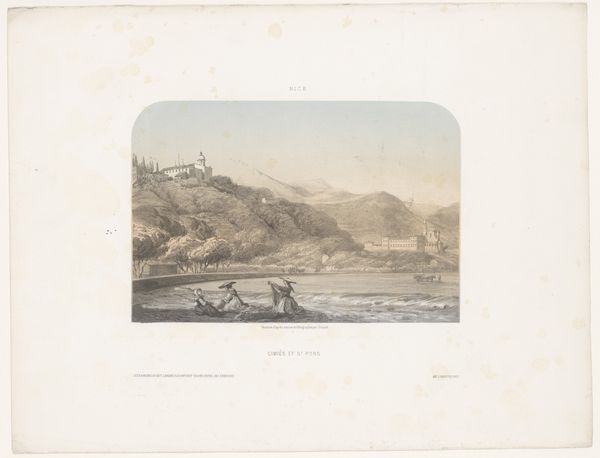
drawing, print, etching, watercolor
#
drawing
# print
#
etching
#
landscape
#
watercolor
#
romanticism
#
watercolour illustration
Dimensions: height 346 mm, width 500 mm
Copyright: Rijks Museum: Open Domain
Auguste Raffet made this print of the ruins of the Citadel of Antwerp in 1832 using lithography, a planographic process that relies on the chemical repulsion of oil and water. The image bears witness to a siege during the separation of Belgium from the Netherlands. To create this print, Raffet would have drawn on a prepared stone surface with a greasy crayon, then treated the stone so that ink adhered only to the drawn areas. This printmaking method allowed for a relatively quick and direct way of reproducing images, making it well-suited for documenting contemporary events. The subtle gradations of tone suggest Raffet’s skilled manipulation of the crayon, and the printing process would have allowed for multiple impressions to be made, disseminating the image widely. Consider the labor involved: from quarrying and preparing the lithographic stone, to the artist's hand in drawing, to the press operator's work in producing the final print. The print serves not only as a historical record, but also as a testament to the technologies that made such rapid communication possible. This work exemplifies how printmaking democratized image production and consumption during a period of significant social and political upheaval.
Comments
No comments
Be the first to comment and join the conversation on the ultimate creative platform.













